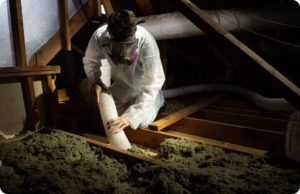Search engine optimization (SEO) is a set of practices that help brands create, optimize and promote content. Its goals are to attract and engage audiences by connecting them with relevant products and services.
SEO uses algorithms to rank pages based on their relevance. This is a relatively complex process, but it ensures that search engines serve up relevant results for users. Click Here to learn more.

On-page optimization is the process of optimizing individual pages on a website to rank higher in search engine results pages (SERPs). The goal of on-page SEO is to ensure that each page on your site is relevant for the keywords you’re targeting. This is done by incorporating the keywords into the page title, meta description, and content. By focusing on the keywords that are most important to your target audience, you can increase organic traffic and generate leads.
On-site optimization is an essential part of any digital marketing strategy. However, it’s easy to get carried away with keywords and forget about the overall user experience. When it comes to on-page optimization, it’s important to balance the needs of the user with your business goals. This means using keywords in a natural way that helps users find what they’re looking for. It’s also important to avoid keyword stuffing, which can lead to penalties from Google.
There are many factors that impact on-page optimization, but it’s often difficult to determine which ones have the most influence. This is because search engines rarely disclose the ranking elements that they consider to be significant. Instead, experts need to deduce which factors have a high impact through testing and logical conclusions.
One of the most important on-page optimization factors is the page’s title tag. The title tag is a text field that appears in the top of search engine result pages and tells search engines what the page is about. Ideally, the title tag should contain the keyword you’re targeting and be less than 60 characters long.
Other on-page optimization techniques include using structured markup to help search engines understand the content of a page. Structured markup is a set of rules that can be added to HTML code to create a semantic vocabulary that enables search engines to better interpret and display content on SERPs.
On-page optimization also includes making a website mobile-friendly. This can mean adapting desktop content to be easily viewed on mobile devices or reducing the size of images and other media files. Additionally, on-page optimization can include optimizing a website’s internal links and URLs.
Off-page optimization
The purpose of off-page optimization is to improve a website’s authority and reputation, both online and offline. This is accomplished through building a variety of external signals, including backlinks, brand mentions and social media engagement. These signals influence how search engines rank pages and how people interact with search results. As such, off-page optimization is an essential part of any SEO strategy.
Link building is one of the most famous ways to perform off-page optimization. The goal is to get as many links as possible to boost a website’s domain authority (or domain rating) and, ultimately, the page rank. However, it’s important to remember that quality is more important than quantity. Many low-quality links can actually hurt a site’s ranking. It’s also crucial to never buy links or participate in link schemes. These types of activities are considered black hat SEO and could lead to a Google penalty.
Another way to perform off-page optimization is through content marketing. This involves creating and promoting relevant, valuable content to attract and engage an audience. Content marketing can be done on a range of platforms, including social media, email and blog posts. However, it’s important to keep in mind that this type of off-page optimization can take time to produce results.
Other off-page optimization tactics include guest blogging, leveraging industry influencers and contributing to third-party publications. It’s also helpful to monitor user-generated content, such as likes, comments and shares, to help improve visibility and increase the likelihood of attracting inbound links. For small businesses, local brands and organizations with physical locations, offline marketing campaigns can also be included in off-page optimization strategies. This includes anything from billboards to local radio and TV ads to social media promotions.
Because off-page optimization influences a wide range of metrics, it’s important for SEO specialists to understand how these different factors work together. This will allow them to identify opportunities for growth and improvement across all channels and platforms. It will also make it easier to communicate with other marketers who may be able to positively impact off-page SEO metrics.
Content creation
Creating compelling content is the cornerstone of effective marketing, and it’s important to know how to create the right type of content for your audience. This includes understanding their needs, creating the right type of content to meet those needs, and using the right keywords in your content. This content should also be useful to your readers and provide them with valuable information.
Before you start creating content, make sure to map out exactly how you’ll execute your strategy. This will help you keep your team on the same page and ensure that each piece of content meets your editorial standards. It’s also a good idea to set up a workflow that will allow you to publish your content quickly and effectively.
To start, think about the topics that your customers are searching for. You can use keyword research tools to identify popular searches and find out how frequently they’re searched. Once you’ve identified a few key phrases, you can focus on creating content around these terms. This will help you rank higher in search engine results and increase your traffic.
Ideally, your content should be long-form and include a thorough explanation of the topic. It’s also a good idea for your content to be evergreen, meaning that it will remain relevant and helpful to your audience for a longer period of time. This will help you avoid the content decay that can occur when a topic is too short-lived.
It’s also a good idea to research supporting keywords that can drive more targeted traffic. This will help you target more qualified leads and improve your conversion rate. You can also look at your competitors’ content to see how they’re using supporting keywords to attract more visitors.
Another factor to consider when creating content is readability. Make sure your text is easy to read by avoiding passive voice, using short sentences, and keeping the tone of your writing consistent. You can also use a tool like SEO Writing Assistant to check for readability and other important factors. In addition to readability, you should always make sure that your content is accurate and trustworthy. This is one of the most important factors that Google weighs when assessing your site’s rankings.
Link building
Link building is one of the most important components of SEO. Search engines value backlinks as a sign that your content is valuable and relevant, so you should focus on creating high-quality content to earn links. This will help you improve your website’s credibility and rank higher in search results. According to a study by Siege Media and Clearscope, businesses that incorporate link building into their content marketing strategy report a 45% higher success rate than those that don’t.
The best way to build links is by creating engaging and informative content that naturally attracts links. This content will have so much value that other websites will want to share it with their audience. This type of content is also easier to promote. Using email outreach to find prospects and persuade them to give you a backlink is another popular technique. However, it is crucial to avoid spamming or over-optimizing your anchor text. Google is aware of these techniques, and it may penalize your site if you use them.
Another great way to build links is through guest posts on reputable websites. This will get you in front of a new audience and can lead to more opportunities in the future. In addition, it can be an excellent opportunity to build relationships with other websites in your industry. This will benefit you in the long run, as it can lead to more backlinks and referral traffic.
You can also use tools to monitor your link status and see how your competitors are doing. These tools can also reveal opportunities for you to get ahead of the competition. But be careful not to fall into the trap of using these tools as a substitute for high-quality content.
You should also stay away from black-hat link-building tactics. These tactics are manipulative and can damage your reputation. In addition, they aren’t worth the risk of getting a manual penalty from Google. Search engine engineers spend a lot of time fighting link-building spam, but it’s still possible to get caught and lose rankings.

